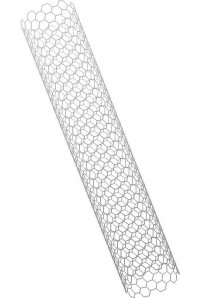Carbon Nanomaterials
Carbon nanomaterials are a family of carbon-based materials with at least one dimension in the nanomater range. One of the most widely studied and used carbon nanomaterials are carbon nanotubes and nanofibres. A carbon nanotube (CNT) is a tubular carbon structure with cylindrical graphene walls parallel to the longitudinal axis, capped by fullerenic hemispheres with nanometer-sized diameters and multi-sized lengths.
The carbon nanotube with a singular graphene tube is called a single wall carbon nanotube (SWCNT) and with concentric graphene tubes nested within each other like “Russian dolls”, a multi-wall carbon nanotube (MWCNT). Other carbon structures with herringbone or cup-stacked graphene layers, which form an angle with the longitudinal axis, are often called carbon nanofibres (CNFs). The carbon nanotube diameter could vary from only few nanometers for SWCNT up to few tens of nanometers for MWCNTs and more than hundred of nanometers for CNFs and length could vary from microns up to millimeters and even centimeters.
- Graphene: a single carbon sheet
- Single-wall CNT (SWCNT): a single carbon sheet rolled to form a tube and capped with half fullerenes
- Multi-wall CNT (MWCNT): many SWCNT nested inside each other like Russian Dolls.
- Carbon Nanofibre (CNF): larger in diameter and a less perfect structure than CNT with graphitic layers often in a fishbone arrangement.
